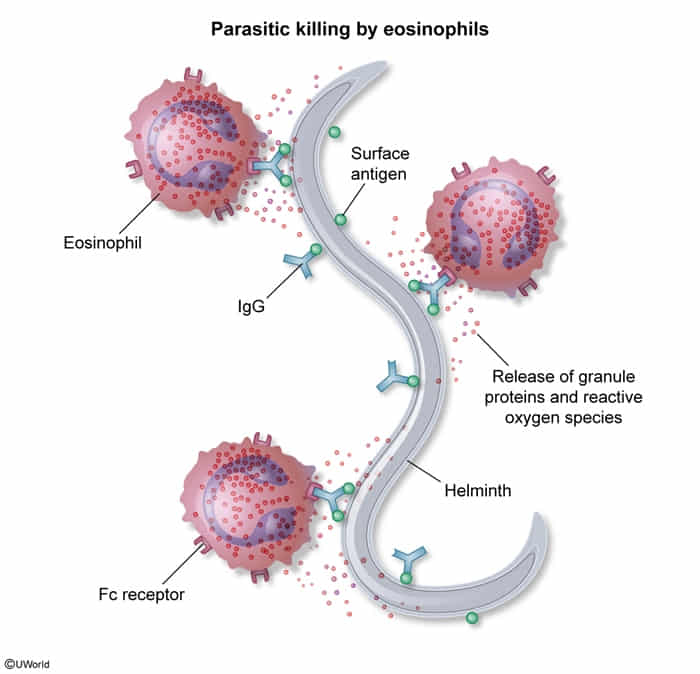- Morphology: Bilobed nucleus with large, eosinophilic (pink-red) cytoplasmic granules.
- Key Cytokine: IL-5 (from Th2 cells) drives production, activation, and survival.
- Primary Functions:
- Parasitic Defense: Kills helminths (worms) via Major Basic Protein (MBP). Antibody-dependent cell-mediated cytotoxicity (ADCC) against helminths (worms). IgE coats the parasite → Eosinophils bind IgE via Fc receptors → Degranulation (release of MBP). t

- Allergic Reactions: Modulates Type I Hypersensitivity; contains histaminase to break down histamine.
